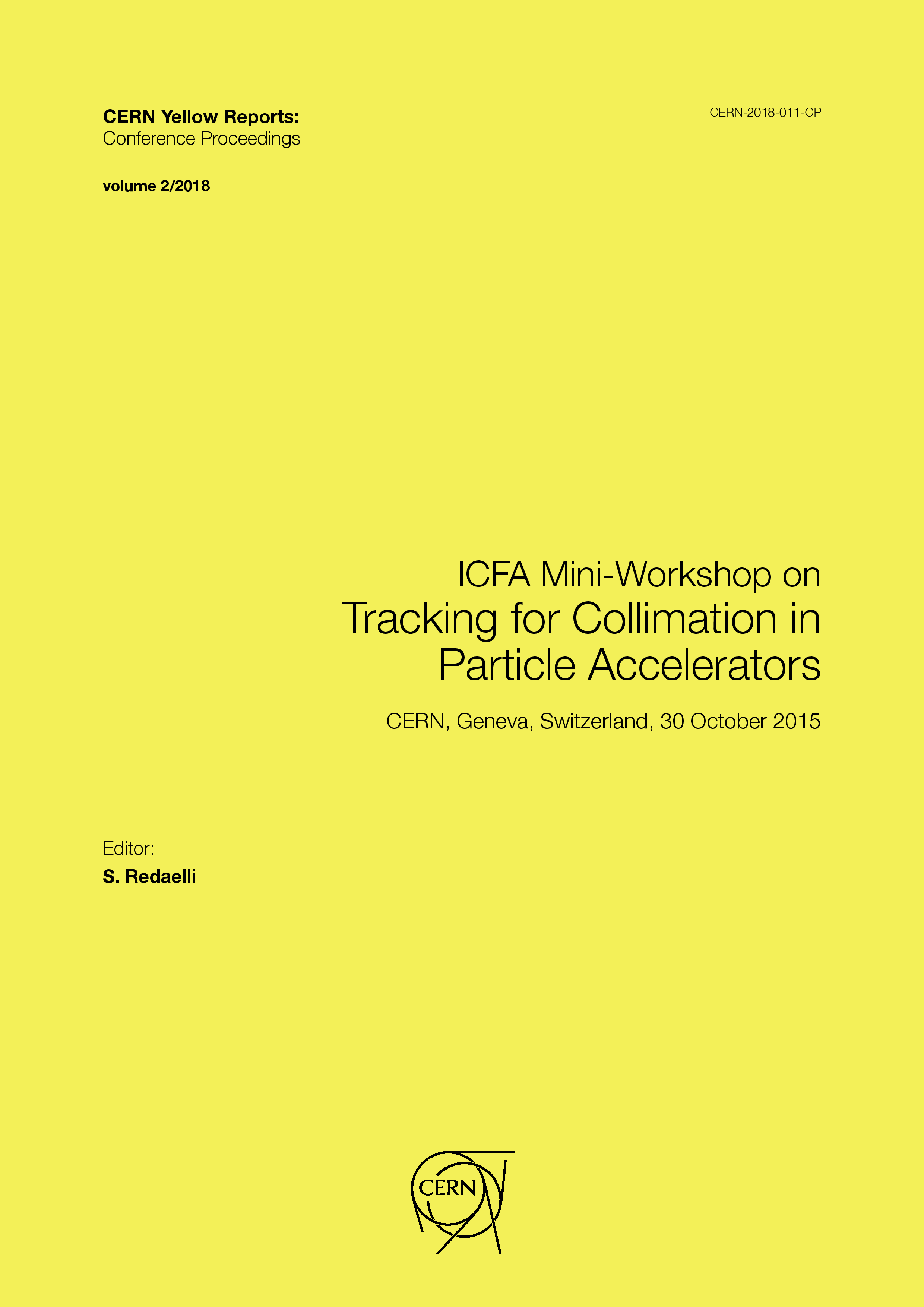Simulation tools for heavy-ion tracking and collimation
DOI:
https://doi.org/10.23732/CYRCP-2018-002.73Abstract
The LHC collimation system, which protects the LHC hardware from unde-
sired beam loss, is less efficient with heavy-ion beams than with proton beams
due to fragmentation into other nuclides inside the LHC collimators. Reliable
simulation tools are required to estimate critical losses of particles scattered
out of the collimation system which may quench the superconducting LHC
magnets. Tracking simulations need to take into account the mass and charge
of the tracked ions. Heavy-ions can be tracked as protons with ion-equivalent
rigidity using proton tracking tools like SixTrack, as used in the simulation tool
STIER. Alternatively, new tracking maps can be derived from a generalized ac-
celerator Hamiltonian and implemented in SixTrack. This approach is used in
the new tool heavy-ion SixTrack. When coupled to particle-matter interaction
tools, they can be used to simulate the collimation efficiency with heavy-ion
beams. Both simulation tools are presented and compared to measurements.
Downloads
Published
Issue
Section
License
Copyright (c) 2018 CERN

This work is licensed under a Creative Commons Attribution 4.0 International License.
Authors who publish with this publication agree to the following terms:
- CERN retains copyright and publishes the work licensed under the Creative Commons Attribution License 4.0 that allows others to share the work with an acknowledgement of the work's authorship and initial publication in this series.
- Authors are able to enter into separate, additional contractual arrangements for distribution of the published version of the work (e.g., post it to an institutional repository or publish it in a book), with an acknowledgement of its initial publication in this series.
- Authors are permitted and encouraged to post their work online (e.g., in institutional repositories or on their website) prior to and during the submission process, as it can lead to productive exchanges, as well as earlier and greater citation of published work (See The Effect of Open Access).

